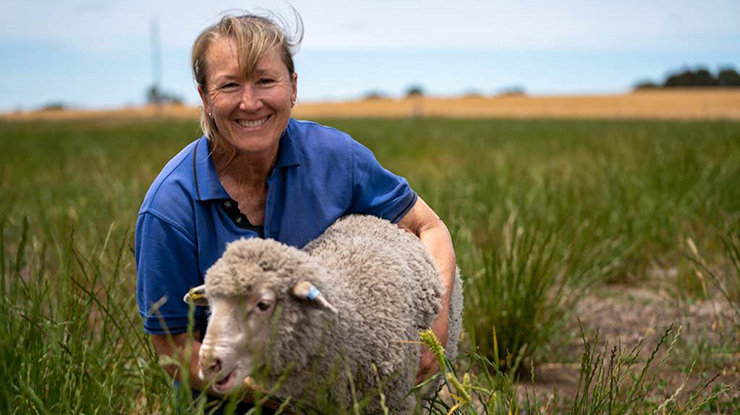
Robust flock drives resilience
As the third generation of a pioneering sheep breeding family, WA producer Lynley Anderson (pictured) is dedicated to producing resilient sheep which meet environmental challenges head-on and deliver on market expectations.
Lynley operates a mixed sheep and cropping operation and Anderson Rams Poll Merino stud outside Kojonup in the Great Southern region of WA.
Her focus on selecting genetics which tick all the boxes – profit, stocking rate and lambing percentages – takes the form of plain-bodied, non-mulesed and worm-resistant sheep. Or, as she likes to call them: ‘undemanding sheep’.
Genetics ingrained
Lynley’s grandfather, Athol Anderson, was an early adopter of objective measurement for wool and her father Alan was one of the first contributors to the Sheep Genetics Australia pilot project in 2002. Alan could see how using genetics to qualify traits and their heritability had potential to rapidly escalate the productivity of the whole flock.
Lynley continues this focus on harnessing the power of genetics, by using Australian Sheep Breeding Values (ASBVs) to breed plain-bodied and highly worm-resistant sheep without compromising meat or wool quality and yield.
After recognising the possibility of breeding worm-resistant sheep in 2002, Anderson Rams began the journey to create a low maintenance and productive flock, with only some weaners now requiring drenching.
Breeding out mulesing
Anderson Rams’ selection decisions focused simultaneously on improving worm-resistance and reducing dag prevalence alongside maintaining plain-bodied animals.
These traits had to be ingrained, particularly in higher rainfall areas where the threat of flystrike is higher, before they could eliminate the need for mulesing.
Decades of culling for flystrike, dags, body wrinkle and fleece faults has further reduced the incidence of fly strike and significantly cut down chemical costs, management and labour.
The end result is a robust, productive and low maintenance animal that has all the right fertility, growth and meat quality attributes and does not require mulesing.
“The only management change we had to make was to change the time of crutching,” Lynley said.
“Now we’re finding non-mulesed sheep are being actively sought after, both by people who have quality assurance schemes and are already non-mulesed, as well as producers who are looking to make the transition to non-mulesed.
“People are realising that sheep can be non-mulesed, still be highly productive and don’t require any further management or further preventative fly treatments.”
This growing demand for productive, easy-care sheep was reflected in Anderson Rams’ most recent sale, which achieved the highest all time average price for a single vendor ram sale in WA.
High fertility
From a resilience perspective, Lynley’s genetic goals include breeding robust animals with sufficient body fat and energy reserves to maintain condition through seasonal feed variations and climatic changes.
She also selects for traits such as early and fast growth, good fleece cuts and high fertility rates.
“We’ve always run sheep at a higher stocking rate than the district average and still our lambing percentage has increased 40% in 20 years,” Lynley said.
The business joins 5,500 ewes each year – including ewe lambs which are joined at 6–7 months of age – and achieved a lambing percentage of 116% lambs to adult ewes mated in 2021.
Sustainable grazing
Lynley’s commitment to a sustainable grazing enterprise extends beyond genetics.
One challenge is managing salinity on valley floors which were cleared 70 years ago and exacerbated by run-off from an abundance of non-wetting gravel.
She’s combating this by maintaining ground cover, mulching straw and replanting vegetation. Perennial pastures and shrubs are also part of the farm’s long-term strategy to lower the saline ground water table.
“My father planted about 500,000 trees in the 1980–90s to try and reduce the encroaching salinity and since then we’ve probably planted a couple of hundred thousand more,” Lynley said.
The increased shade and shelter from the trees are also a flock management tool, contributing to improved lamb survival rates.
Lynley also practices feedbase management strategies such as deferred grazing, using confinement feeding and grazing crops, at the start of the season to help pastures establish. This is followed by rotational grazing to maintain ground cover and reduce run-off – strategies which support an increased stocking rate as well as improving soil health.
“All these changes together has given us a more robust system with more robust sheep resulting in a more resilient business,” Lynley said.



